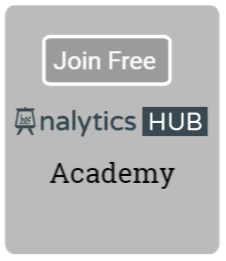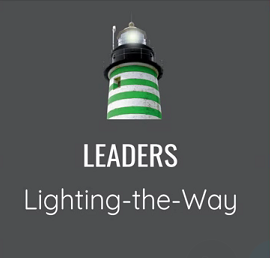 This blog now is 6 years old and it has become annual ritual for me to publish 10 best Qlik articles for those of you who don’t have time to read blog posts. In many ways, 2018 was another remarkable year for me personally and definitely for Qlik with a new CEO at the helm.
This blog now is 6 years old and it has become annual ritual for me to publish 10 best Qlik articles for those of you who don’t have time to read blog posts. In many ways, 2018 was another remarkable year for me personally and definitely for Qlik with a new CEO at the helm.
Qlik Luminary
I became Qlik Luminary in 2018. That is an honor that fills me with gratitude and immense pride. I wanted to express my gratitude to Gillian Farquhar and Viktoria Lindback for their relentless enthusiasm and support for the Luminary program.
Qlik Meetup
 Back in 2015, I started a small Qlik developer group with the help of my friend, Dalton Ruer, with less than 10 developers in the group. Fast forward to 2018 — the group has now morphed into a Qlik meetup with 169 members. I am thankful to every Qlik enthusiast in Atlanta who supported our Qlik meetup in 2018 and looking forward to a fabulous 2019.
Back in 2015, I started a small Qlik developer group with the help of my friend, Dalton Ruer, with less than 10 developers in the group. Fast forward to 2018 — the group has now morphed into a Qlik meetup with 169 members. I am thankful to every Qlik enthusiast in Atlanta who supported our Qlik meetup in 2018 and looking forward to a fabulous 2019.
I attribute success of the group with the fact that one of my Qlik heroes, HIC, visited Atlanta and spoke at our Qlik meetup in December along with the man with the hat — Rob Wunderlich.
I am also thankful to these celebrity Qlik Luminaries who have spoken at Qlik meetup in Atlanta in 2018: Ralf Becher (irregularbi), Konrad Mattheis (qlik2go), Alexander Nagler (qlik2predict), Speros Kokenes (sperosck), Karl Pover (karlpover)
10 Best Qlik Articles
Before I continue with my blog series about becoming a Qlik Sense Developer, I’d like to share my current progress and confirm that it has been well worth the extra time and effort. I’ve found out that there are manifold ways to apply web development skills to extend Qlik Sense’s functionality — Cycle Plots in Qlik by Harvesting Wisdom
Version 1.4 of the Qlik Sense Document Analyzer (QSDA) tool is now available for download here.If you are not familiar with QSDA, it’s a free application profiling tool for Qlik Sense that can help you identify items such as unused fields, poorly performing expressions and data model problems. — Qlik Sense Document Analyzer v1.4 by QlikView Cookbook
Starting your ideas around a mashup dashboard can sometimes be a time consuming thing to do. Especially when you’re starting your efforts with coding it with HTML/CSS/JS. For this I’ve been researching a few methods and tools to be able to speed up the process of prototyping. I still use bootstrap a lot, which, according to the experts, could be better done with for example Angular JS. But since I understand bootstrap a bit better, it is still my preferred framework of use. When you are out there looking for tools that can help you, you’ll find there are lots of alternatives. A search on ‘bootstrap tools’ using http://alternativeto.net will give you a nice list of tools available. — Prototyping Your Mashup Dashboard by QlikShow
I’m a big fan of Microsoft’s free code editor Visual Studio Code (VSCode). For some time now I’ve been using it for various non-Qlik projects including Arduino based ones. Recently I decided to make the leap to working with Qlik script files in VSCode rather than Notepad++ (NPP) which had been my go-to editor for many years — Working with Qlik Script in VSCode by QlikView Addict
Even with the advent of Qlik Sense Security rules in the QMC you may find yourself working with Section Access. Maybe you don’t have a server, maybe you want to guard against users just taking the QVF file (and all your data with it) or maybe you want to implement section access reduction. it was the latter that prompted the bog, seeing an interesting behaviour for the first time took a bit of investigating — Section Access Reduction in Qlik Sense by Qlik Central
A data model in Qlik usually consists of one component only, a typical Star Schema or Snowflake. Tables are linked by same field names. However, Data Islands (unlinked tables) are used very often to drive UI or analytical expressions and who says we cannot have multiple sub-models (components) for different aspects? So, how we can find out if the selected tables in our extension are connected directly or indirectly, means they associate at all? — Do My tables Associate? by Irregular.bi
Qlik Sense is all about empowerment and extensibility. Whether you are a business user designing a new dashboard just by dragging and dropping objects in your browser or an experienced developer coding extensions, mashups and custom connectors, this platform always gives you the chance to challenge yourself and create something completely new — Widgets 101 by Qlik Freak
Like with the pie chart example you need to establish a contextual relationship between the years right? That’s what Year over Year -means. Comparison. Yet that up and down, roller coaster ride, makes it impossible to retain the very context you asked for — Visualizing Analytics in Virtual Reality by Qlik Dork
Qlik Sense is in many ways a more advanced platform than its predecessor, QlikView. Scalability, rich APIs, enterprise-level administration — there are many features of a good architecture in it. However, what can be challenging for Qlik Sense customers (besides dealing with rudimentary data visualization) is automation. — Automation Server for Qlik Sense by BI Review
It was interesting for me to listen to the latest edition of Data Stories with interviewee Michelle Borkin. From the opening snippet, Michelle is confirming the fundamentals:
“Put a title on your graph, annotate the important things, label your axes, pick appropriate visual encodings, …, people will understand your visualizations” — Data Visualization can be that simple by Qlik TipsWhen building interactive web applications, the complexity of an app’s logic can grow unwieldy as the app grows in scope. A lot of this complexity is owed to a continuously morphing state. When we say state, what we really mean is a set of data that defines what our app should render — What is Reactive Programming by Qlik Branch
One of the neat features in Qlik View that has not found it’s way into Qlik Sense is the Cycle Group. Alternative Dimensions are nice, but only affect one visualisation at a time. Here is how you can create a cross-visualisation cycle — How to Build a Cycle Group in Qlik Sense by QuickIntelligence




